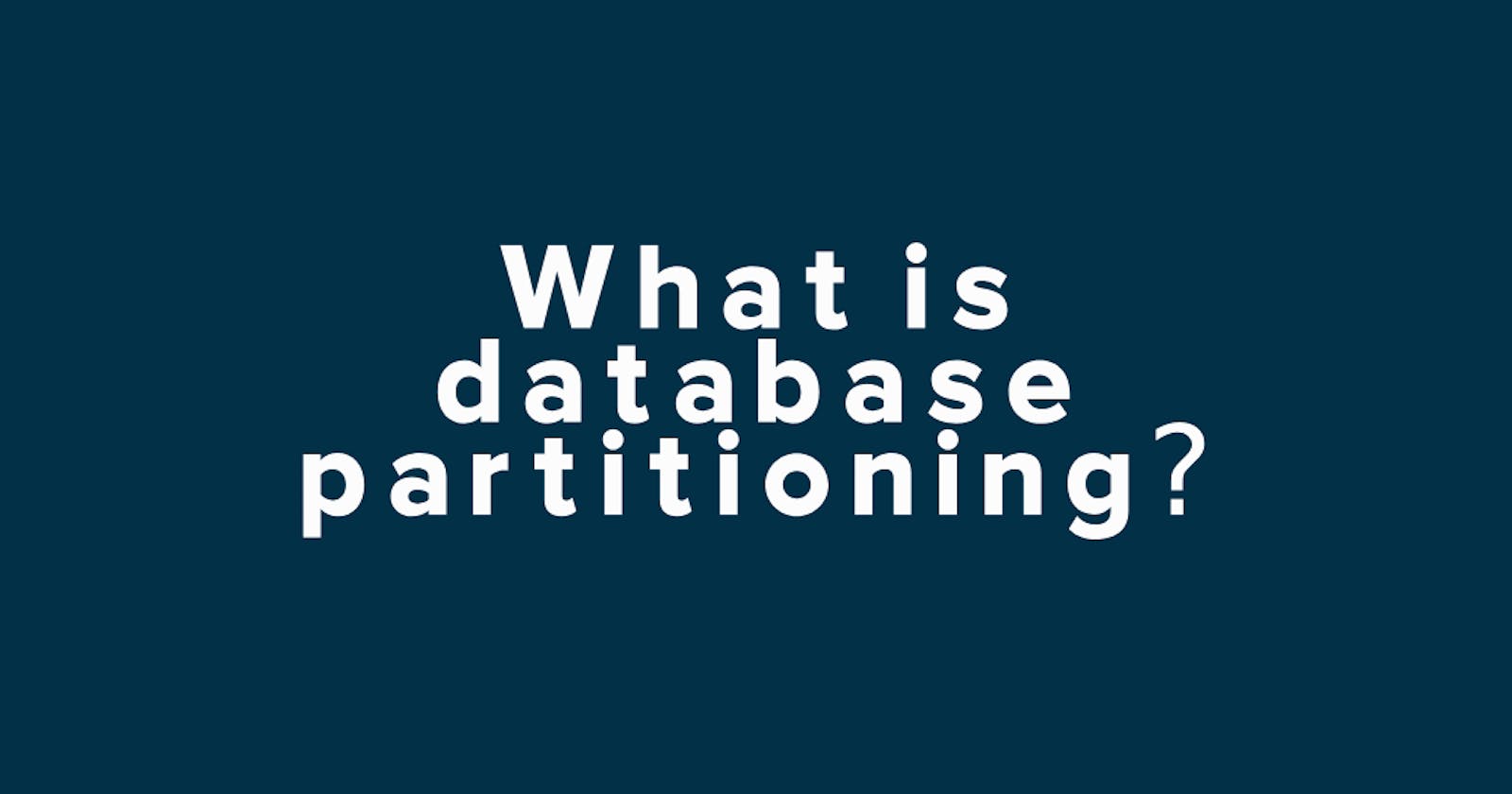Did you know that database partitioning is an amazing technique that can help you manage your large databases more easily? By dividing your database into smaller partitions, you can access and manage each partition independently, which can save you a lot of time and hassle. Plus, it can greatly improve the performance and availability of your database, making it much more efficient and reliable. With database partitioning, you can also reduce the risk of data loss or corruption, and easily adapt to changes in your business needs. So, why not give it a try and see how it can benefit you?
Several types of partitioning
Horizontal Partitioning
This involves dividing a database into rows.
For example, a multinational company might have a database of all its employees. They could horizontally partition this database by country, so that all employees from the USA are in one partition, all employees from Canada in another, and so on. This way, when they need to access data for all employees in a specific country, they only need to query the relevant partition.
Vertical Partitioning
This involves dividing a database into columns.
For example, an e-commerce company might have a database with customer information, including name, address, and purchase history. They could vertically partition this database so that all names are in one partition, all addresses in another, and all purchase histories in a third. This way, if they need to send a marketing email to all customers, they only need to access the names and email addresses, not the entire customer record.
Range Partitioning
This involves dividing a database based on a range of values.
For example, a healthcare provider might have a database of all its patients. They could partition this database by age range, so all patients between 0-20 years old are in one partition, 21-40 in another, and so on. This way, when they need to analyze data for a specific age group, they only need to query the relevant partition.
List Partitioning
This involves dividing a database based on a list of values.
For example, a car manufacturer might have a database of all its car models. They could partition this database by car type, so all sedans are in one partition, all SUVs in another, and so on. This way, when they need to access data for a specific type of car, they only need to query the relevant partition.
Hash Partitioning
This involves dividing a database based on a hash function. For example, a social media platform might have a database of all its users. They could use a hash function on the user ID to determine which partition to store each user in. This evenly distributes the data across all partitions and ensures that the data can be quickly accessed by user ID.
Implement partitioning in PostgreSQL
PostgreSQL supports range, list, and hash partitioning. You create a parent table and then create child tables that inherit from the parent. You then use the CHECK constraint on the child tables to define the partitions.
Range partitioning in Postgres
You create a parent table, and then create child tables that inherit from the parent. You use the CHECK constraint on the child tables to define the ranges.
CREATE TABLE measurement (
logdate date not null,
peaktemp int,
unitsales int
);
CREATE TABLE measurement_y2006m02 (
CHECK ( logdate >= DATE '2006-02-01' AND logdate < DATE '2006-03-01' )
) INHERITS (measurement);
CREATE TABLE measurement_y2006m03 (
CHECK ( logdate >= DATE '2006-03-01' AND logdate < DATE '2006-04-01' )
) INHERITS (measurement);
List Partitioning in Postgres
Similar to range partitioning, but the CHECK constraint checks for specific values instead of ranges.
CREATE TABLE measurement (
city_id int not null,
peaktemp int,
unitsales int
);
CREATE TABLE measurement_city_1 (
CHECK ( city_id = 1 )
) INHERITS (measurement);
CREATE TABLE measurement_city_2 (
CHECK ( city_id = 2 )
) INHERITS (measurement);
Hash Partitioning in Postgres
PostgreSQL doesn't directly support hash partitioning, but you can emulate it using a combination of range partitioning and a function that calculates a hash value.
CREATE TABLE measurement (
device_id int not null,
peaktemp int,
unitsales int
);
CREATE TABLE measurement_hash_0 (
CHECK ( MOD(device_id, 4) = 0 )
) INHERITS (measurement);
CREATE TABLE measurement_hash_1 (
CHECK ( MOD(device_id, 4) = 1 )
) INHERITS (measurement);
CREATE TABLE measurement_hash_2 (
CHECK ( MOD(device_id, 4) = 2 )
) INHERITS (measurement);
CREATE TABLE measurement_hash_3 (
CHECK ( MOD(device_id, 4) = 3 )
) INHERITS (measurement);
Partitioned Databases in Django
Django does not natively support database partitioning. However, you can use third-party libraries like architect to add partitioning support to your Django models.
First, install architect: [Homepage - PyPi - Github]
pip install django-architect
then, in your Django model, you can use the architect.install function to add partitioning:
import architect
@architect.install('partition', type='range', subtype='date', constraint='month', column='created_at')
class Order(models.Model):
created_at = models.DateTimeField()
# other fields...
In this example, the Order the table will be partitioned by the created_at field, with a new partition created for each month.
You can then use Django's ORM as you normally would, and architect will handle routing data to the correct partition.
Advantages vs Disadvantages
| Advantages of Database Partitioning | Disadvantages of Database Partitioning |
| Scalability | Complexity |
| Improved Query Performance | Maintenance Overhead |
| Manageability | Data Skew* |
\Data Skew*: If your data is not evenly distributed across partitions, you can end up with some partitions that are much larger than others. This can lead to inefficient use of storage and can degrade query performance.

